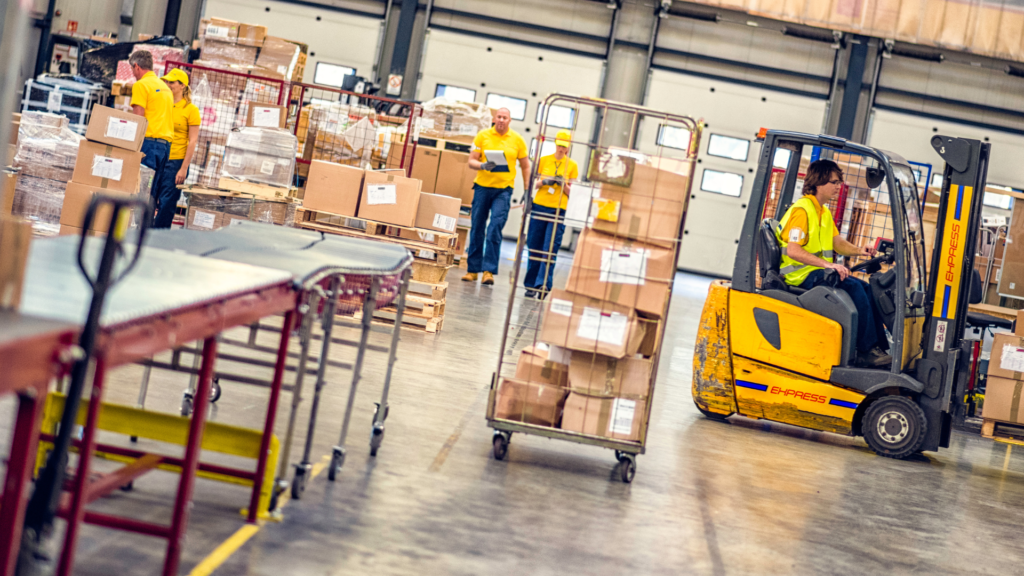Warehouses are considered to be one of the most dangerous places to work, and with more people and products moving about, there are more opportunities for accidents. Warehouse employees have a much higher risk of injury than employees in general. These workers face a lot of hazards; some common hazards include slips, trips, falls, contact with moving machinery, and exposure to fire or extreme temperatures. To lower your warehouse worker’s risk of these injuries, follow these safety tips.
Use Proper Signage
Warehouses often have large areas of enclosed space. The workers must be able to navigate these enclosed spaces and see their surroundings. Use large signs, brightly lit pathways, and directional arrows to help employees see where they are going.
Provide Proper Footwear
Employees should be required to always wear appropriate shoes while on the warehouse floor. Workers should wear protective footwear, such as steel toe cap boots, and laces should be tied tightly at all times.
Provide Proper Training
A warehouse is a place of work where employees work by lifting heavy items and stock. So, it is necessary to make sure that workers are provided with proper training to protect their physical health. Key training includes how to lift heavy items safely and how to work safely at height. Training should be an ongoing process, so refresher training should be provided every year at least.
Develop and Maintain a Safe Work Environment
Employees often work in warehouses that contain hazardous materials that pose a danger of serious injury or death. Hazardous materials, such as chemicals and combustible liquids, should be stored safely to prevent injury and illness. In addition, regular inspection and asbestos removal kansas (or elsewhere) should be carried out on an occasional basis to ensure optimum safety. Furthermore, all workers should be trained on safety protocols and procedures.
Enforce Safety Rules
For warehouse safety, warehouse supervisors should enforce rules at all times under all circumstances. Even during an emergency, safety rules shouldn’t just go out the window. If someone is not playing by the rules, don’t let it slide. These rules are there to keep everyone safe, so if a worker is endangering themselves, they may also be endangering others. Don’t give second chances – it only takes one accident to cause serious injury.
Maintain a Health and Safety Plan
Health and safety plans need to be well organized and have clearly defined policies, procedures, and written instructions. Safety plans should also include regular inspections and risk assessments.
Provide Safety Equipment
Providing safe warehouse equipment like ear defenders and safety gloves — from reliable providers such as Unigloves (unigloves.co.uk) and others — as well as training employees to use them, can help reduce the risk of injuries to warehouse workers.
Simply put, providing personal protective equipment ensures warehouse safety. Without proper protection, workers may come into contact with corrosive liquids, be exposed to foreign particles in their eyes, or suffer hearing loss from prolonged exposure to noise. PPE can, however, protect them against all these. In light of the fact that personal protective equipment can be soured in bulk at affordable prices from prontodirect.co.uk and similar websites, providing the necessary safety gear to warehouse employees should not be a problem.
Provide Safe Work Practices
Working in warehouses is no joke. With all of the heavy machinery, many warehouses have strict safety guidelines. Being aware of the safety rules will help you and your employees stay safe. Using proper safety equipment is a must when it comes to dangerous jobs. This practice helps reduce the risk of accidents and injuries in the workplace. It goes without saying that employers are responsible for ensuring their employees are safe at work.
Label Hazardous substances
To ensure maximum safety inside a warehouse, it is prudent for workers to identify hazardous substances and handle them with care. Such substances should ideally be labeled with Magnetic Warehouse Labels; instructions about how to deal with them should be clearly mentioned on the tags. Some substances should be kept out of contact with sunlight, others may need the workers handling them to wear respirators, yet others may be flammable. These details should be communicated clearly through labels for preventing work-related injuries.
Lead by Example
Ultimately, supervisors and managers should be following the rules of the letter. If a manager walks onto the warehouse floor without a high-vis jacket, chewing gum, or wearing open-toe shoes, nobody is going to respect the rules. Otherwise, workers will see it as one rule for them and one rule for everyone else.
Warehouse safety is a personal responsibility as well as a shared responsibility between employees, managers, and supervisors. After all, at the end of the day, your workers expect to go home safe and sound every day. Safe and happy warehouse employees are the key to a healthy and safe warehouse.

